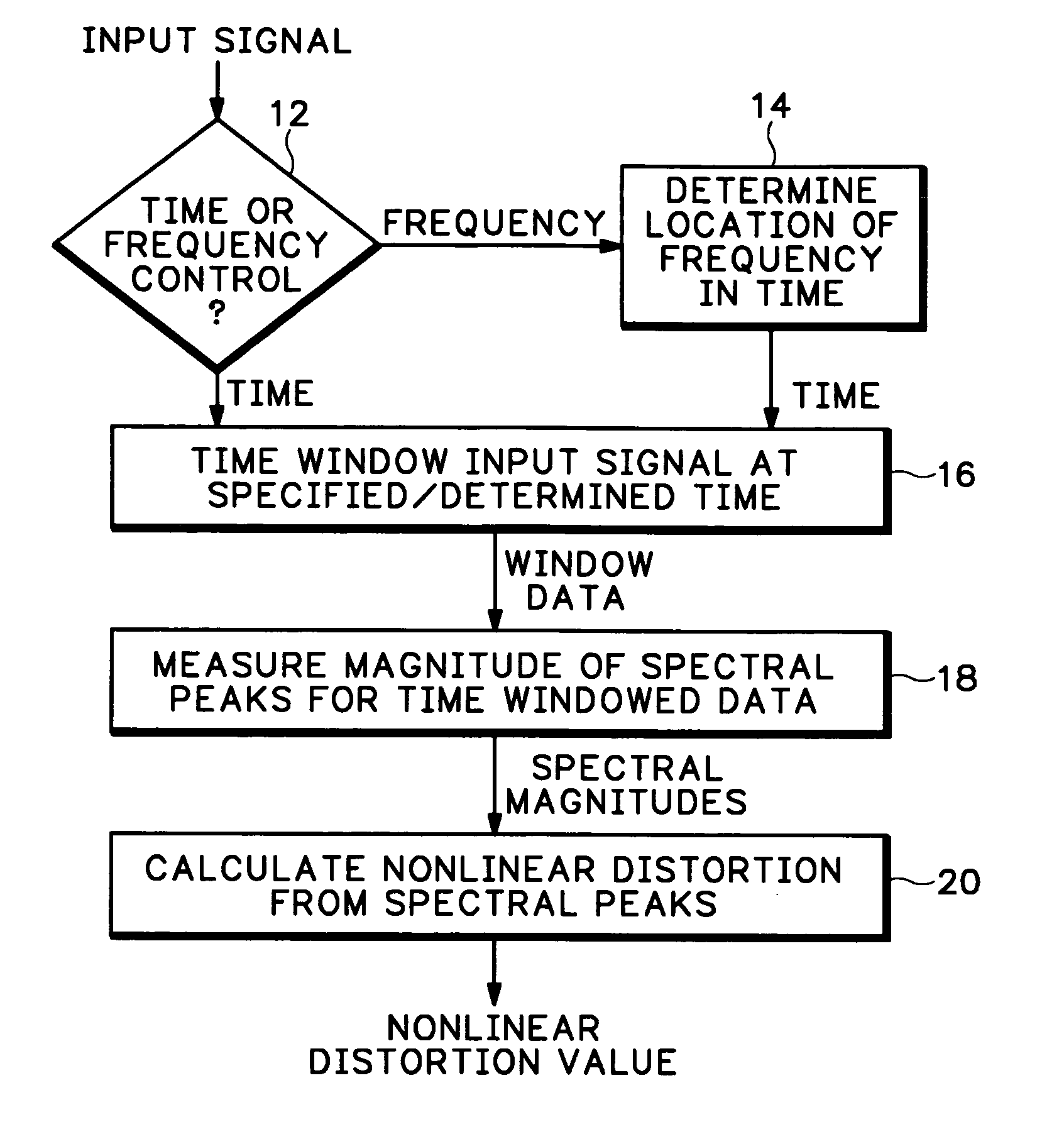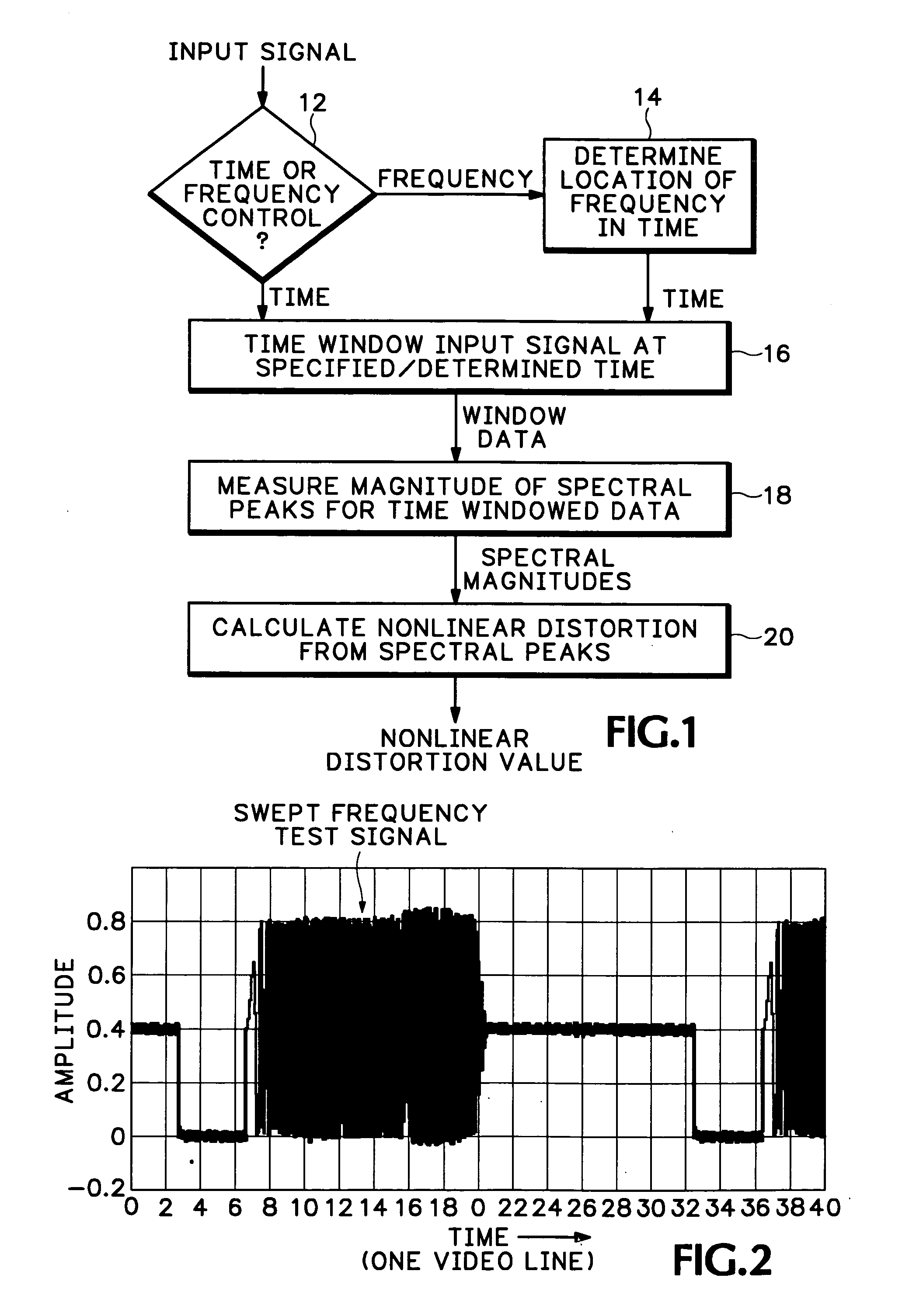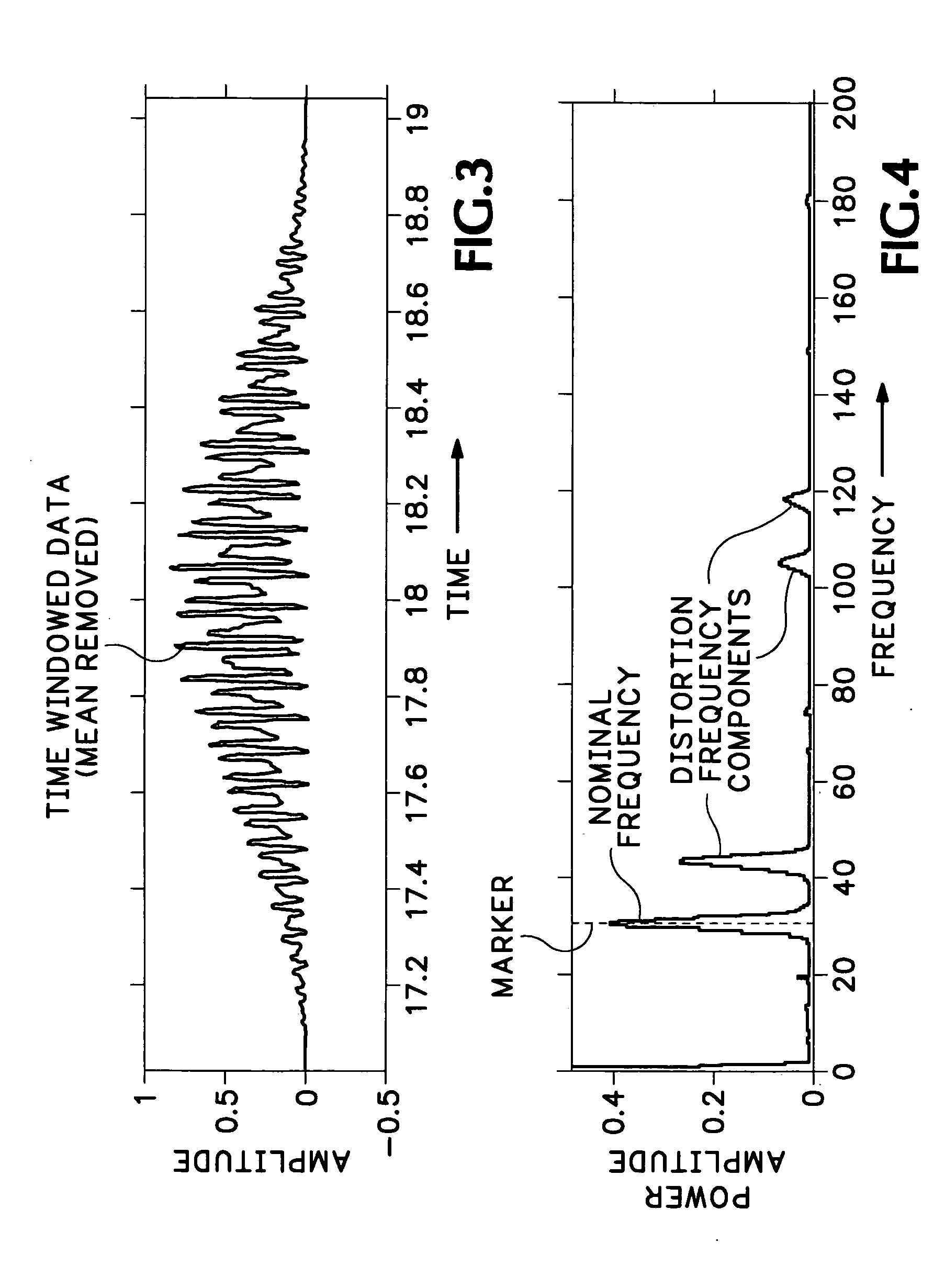Measuring instantaneous signal dependent nonlinear distortion in response to varying frequency sinusoidal test signals
a nonlinear distortion and instantaneous signal technology, applied in the field of signal distortion measurement, can solve the problems of uncorrelated signal fidelity information, interference with prior methods for measuring burst frequencies, and devices that introduce errors such as noise and frequency aliasing,
- Summary
- Abstract
- Description
- Claims
- Application Information
AI Technical Summary
Problems solved by technology
Method used
Image
Examples
Embodiment Construction
[0015] Referring now to FIG. 1 a method is shown for measuring nonlinear distortion in a varying frequency sinusoidal signal, either multi-burst or swept, output from a system under test. A narrow time window is used to produce time windowed data that represents a portion of the output signal that contains a frequency of interest. A spectrum of the time windowed data is used to determine magnitudes of spectral peaks. The magnitudes of the spectral peaks are used to determine instantaneous signal dependent nonlinear distortion for the system under test. There are two possible control inputs: frequency or time (step 12).
[0016] If a location of a particular frequency (frequency control input) is to be found, the method described in the afore-mentioned U.S. Patent Publication No. 12004-0161061-A1 is used to automatically determine a location (step 14) in time of the particular frequency within the output signal. The resulting location in time or the time control input is used to genera...
PUM
 Login to View More
Login to View More Abstract
Description
Claims
Application Information
 Login to View More
Login to View More - R&D
- Intellectual Property
- Life Sciences
- Materials
- Tech Scout
- Unparalleled Data Quality
- Higher Quality Content
- 60% Fewer Hallucinations
Browse by: Latest US Patents, China's latest patents, Technical Efficacy Thesaurus, Application Domain, Technology Topic, Popular Technical Reports.
© 2025 PatSnap. All rights reserved.Legal|Privacy policy|Modern Slavery Act Transparency Statement|Sitemap|About US| Contact US: help@patsnap.com



